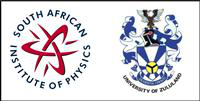Speaker
Would you like to <br> submit a short paper <br> for the Conference <br> Proceedings (Yes / No)?
NO
Abstract content <br> (Max 300 words)
Our project presents an analysis of our results for a stellar modelling project. These results were obtained using the Equation Of State (EOS) by modelling main sequence A-stars. This has been done
with the aim of making the elusive transition between the envelope and the atmosphere as smoothly as expected for some of the stellar variables. However, the bigger goal has been to create an equilibrium model that will prove useful in stellar pulsation studies. In our bid to achieve the elusive transition, we have invoked the well known ATLAS9 program that is used to model stellar atmospheres along with the OPAL EOS tables provided by the Livermore laboratory, to make good models in the stellar atmosphere. We have satisfactorily achieved this by comparing the
ATLAS9 EOS variables with the OPAL EOS in the atmosphere regime. The results obtained matched quite well for the density, the adiabatic exponent, temperature gradient and the third adiabatic exponent. For instance, the superposition of the density profile done for the two methods, implies that the OPAL EOS is to a great degree equivalent to the ATLAS9 EOS counterpart in the atmosphere. The significance of carrying out this comparison calculations was to probe the feasibility of our project and thus see if the OPAL EOS works in the atmosphere regime. In addition, this gave credence to our research work as well as an intuitive feel of how the OPAL EOS evaluated for low temperatures and pressures fared in the atmosphere regime. Furthermore, we have calculated the ATLAS9 models using the OPAL EOS tables in the atmosphere regime, this was done to see if we could create logical models with the OPAL EOS that agree well enough with the original ATLAS9 models. The new models that were created with the inclusion of the OPAL EOS agreed well with the original ATLAS9 models. This implies the results we have obtained have shown the success of the OPAL EOS in the atmosphere regime. Thus our research work successfully replaced the ATLAS9 EOS with the OPAL EOS as well as calculating the thermodynamic variables using the new EOS. We have done the spectrum using the new EOS to see how it compares with the original spectrum of ATLAS9. We have also used our new model and compared it to Medupe's pulsation code. We have also ran the matching code to see if the matching improved between th atmosphere and the envelope.
Level for award<br> (Hons, MSc, <br> PhD)?
MSc
Apply to be<br> considered for a student <br> award (Yes / No)?
yes
Main supervisor (name and email)<br>and his / her institution
Professor Thebe Medupe, Thebe@saao.ac.za, North-West University (Mafikeng Campus)

